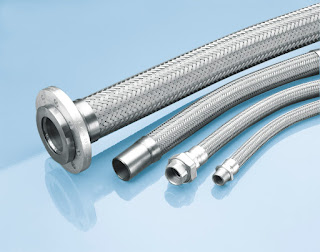Hoses have a wide range of process applications in food and
drink, textile, pharmaceutical, chemical to manufacturing industries. They are
designed to meet some certain needs, meaning hoses are manufactured,
understanding the needs of customers. But a good hose is not the one that meets
your requirements only but the one made adhering to highest industry standards
and using the fine grade material that is approved. Choose your hose keeping
that in mind so you can get most out of it.
There are different types of hoses and they are used for
different purposes. Here in this blog I will be looking at them, discussing
various aspects such as the purposes they are used for, prices, features and
the likes. So read? Let us get started here…
Flexible horses
The flexible hoses are the most popular ones and are widely
used for a wide range of process applications. They are used in road tankers,
applications used in pharmaceutical industry, and the likes. If you have the
same purpose, below are some of popular types of flexible hoses.
- Smoothflex: As the name suggests, this hose is super flexible. And so it is used an alternative to other heavier products where optimum flow, reduction of turbulence and more flexibility of applications are required.
- Coreflex: It is robust process convoluted suction and delivery hose and is very much similar to the smoothflex in terms of applications and the material it is made of.
- Lanflex hose: The hose is used primarily for suction and discharge processes of a range of chemicals or acids or form of same kind. The lanflex hoses are used mainly with loading tankers and process applications used in pharmaceutical industry. They are made using polypropylene films or fragments and have an outer cover that the hose resistant to any kind of whether that is reinforced with external and internal wires that are galvanised.
Brewer's hoses
Other hoses that are widely used are brewer’s hoses. They
are used for all types of suction and discharge processes of any kind of liquids.
The hoses are used with procession applications in used food processing
industry. And they are known by different names such as Citerdial, Lactadial,
Allkier, Allkier D, and Terllvin. They all resemble in their properties and
mostly used in processes used for handling liquid such as milk.
Trelleborg Hose
This type of hoses is mainly used for the purposes. Braided Fuel
Hose which is made of PVC is widely used by for safe transfer
of corrosive fluids while PVC Ultra pure silicon hose another widely used hose is perfect
for industries dealing with food and dairy products as well in marine boats.
Now you are more able to make an informed decision when you
need to choose a hose for you. Keep those things in mind when you are looking
to buy a hose.






